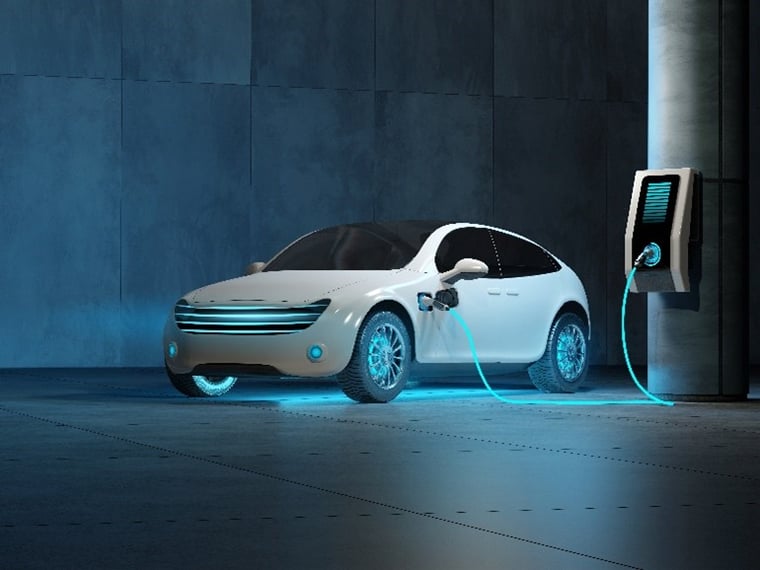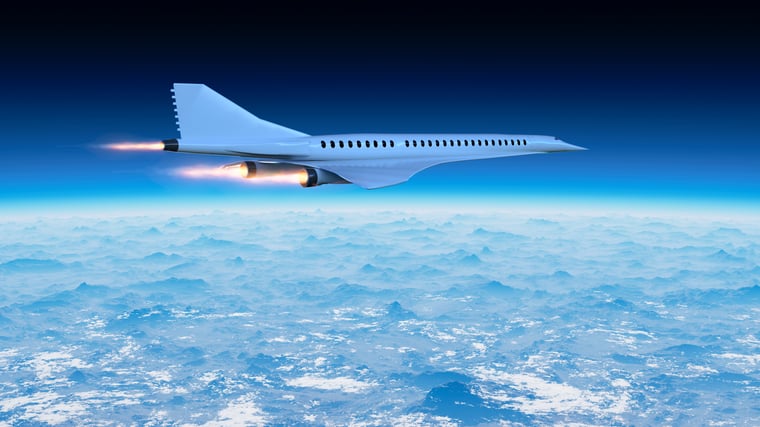Transportation is the lifeblood of the hospitality industry. Without flows of people on the move, there’d be no travel. Without travel, the hospitality and tourism industry would just collapse. Thus, whether a day trip, domestic or international travel, whether by bike, car, train or plane, transport and mobility are major cornerstones of our industry.
---HOSPITALITY INSIGHTS ---
Sustainable mobility
Lately, extreme environmental and socio-economic events, such as the current ramping inflation, increasing energy and fuel costs, and heatwaves have emphasized the need to develop transportation solutions that are affordable and sustainable. As a response, the German government have implemented a € 9-month ticket for local and regional public transport to encourage climate-friendly travel during summer at a reasonable price. This initiative has resulted in a reduction of 1.8 million tons of CO2 and replaced 10% of car trips.
Indeed, a more human-centric approach is becoming mainstream in mobility. For example, public transport is globally shifting to fare capping, or giving passengers access to the best fares on their pubic routes and contactless mobility payments to offer more attractive solutions. The success of such initiatives underlines the current momentum around the train travel industry. Different stakeholders are moving towards (re)positioning traveling by train as a valid alternative to intracontinental flights.
Let’s take a closer look at what is happening. Google.com has recently improved its rail search experience by developing new features allowing users to find and book train journeys to certain countries in Europe, as well as Japan. Barcelona is planning to redesign its train station by 2026 to position it as a reference for intermodal hubs and to place a strong emphasis on sustainability. Thus, Barcelona is ready to actively participate in what is being called the “Spanish rail revolution”, which could lead to revitalized interest in taking part in the Iberian railroad adventure.
The term “rail revolution” has also been used by National Geographic to describe the current evolution of the train travel industry in Europe. The fact is that customers’ needs and expectations are changing, as “increased airport security and a heightened awareness around carbon-intensive flights — coupled with a pandemic-driven change in travel habits — have helped the rail industry to a renaissance of sorts”. Moreover, different political decisions taken lately, such as the EU plans to double high-speed rail use by 2030 or France banning domestic flights that are less than 2.5 hours if a rail alternative exists, push forward toward the rejuvenation of the rail industry.
 The urge to move away from combustion engines and switch to electric transport is getting stronger. Regulators are starting to pass rules banning the sale of gas-powered cars by a certain date. European countries are providing support to stimulate the transition to electric vehicles, including public transportation. Germany is one of the first countries that decided to invest in hydrogen trains, and the first passenger hydrogen trains began running there late this summer. Other countries, such as India and the US are following.
The urge to move away from combustion engines and switch to electric transport is getting stronger. Regulators are starting to pass rules banning the sale of gas-powered cars by a certain date. European countries are providing support to stimulate the transition to electric vehicles, including public transportation. Germany is one of the first countries that decided to invest in hydrogen trains, and the first passenger hydrogen trains began running there late this summer. Other countries, such as India and the US are following.
Despite the momentum for traveling by train, it is clear that rail transport alone cannot cover all the travel needs. Nevertheless, there are solutions for the further development of rail travel. Indeed, more and more airlines and train travel companies are partnering to offer joint offers, such as traveling by train from home to the airport with different kinds of incentives to attract customers, which also reduce greenhouse gas emissions. This summer, for example, Thalys and KLM launched a high-speed train between Brussels and Amsterdam airport Schiphol to operate one less flight between these two destinations. Large-scale, ambitious infrastructure projects, such as the Rail Baltic route or the high-speed railroad in California from Los Angeles to San Francisco, require huge investments and stakeholder support, resulting in very slow progress in their construction, despite a potentially enormous role these routes can play in the transportation system.

Sustainable transportation matters to a growing number of customers, and it is they who are spearheading the green change. The future of travel requires radical steps, and not surprisingly, it's driven by a new generation that is "carbon-conscious, dynamic, independent, and tech-savvy”. We all know that the airline industry is highly polluting (picture 1), and the players who can challenge the status quo and offer customers a new breakthrough solution will win.
 Picture 1: Flights and emissions summary
Picture 1: Flights and emissions summary
The positive shift is already here – in October, the UN agreed on its long-term goal for net-zero aviation emission by 2050. The best time to innovate for safe and sustainable mobility is now. Some major players are already making a strategic move toward sustainability. For example, Expedia has announced its Open World™ philosophy and plans to bring a positive social impact, make travel more inclusive and contribute to sustainability. Sustainable mobility is big topic, and startups like Share.P, which aims to solve urban parking problems in a sustainable way, could become the new trendsetters.
We all need to be open to change - the new system of transportation and travel will probably also require significant alterations in our behaviors.
---HOSPITALITY INNOVATION---
Flying vehicles, mobility ventures and the Metaverse
Industry players keep innovating. With the focus on sustainable travel and cutting-edge technologies, Volkswagen launched the Gen.Travel project to create a brand-new vehicle category that combines sustainable and digital in its strategy to develop a seamless door-to-door travel experience. The idea of flying cars is very appealing, and China is already testing the potential of using magnetic levitation for passenger vehicles. This technology is, perhaps, inspired by Hyperloop projects, which are still work in progress. For example, Canadian startup TransPod plans to blend a plane with a train to develop a “FluxJet”, a fully-electric hybrid transportation system that would carry passengers at the maximum speed of up to 1000 km/h in “a plane without wings”.

In parallel, we are entering a new era of supersonic flights with carbon-neutral and ultrafast passenger planes. Zero-emission electric flight may become the new norm and electric-hybrid aircrafts manufacturers are in demand. The successful first flight of the four-seat electric plane “e-Sling”, developed by ETH students, paves the way for a cleaner future. When most companies are thinking about how to reduce CO2 emissions, Air Company uses this abundant resource and converts CO2 into carbon-negative alcohols and fuel. JetBleu, Virgin Atlantic and other aviation companies have been attracted to this idea of sustainable aviation fuel (SAF) and are investing in this startup.
It is likely that sustainable innovation in airlines can offset the “flight shame” that some people feel about flying because of its carbon footprint. It could also further spur the blended travel, or bleisure, as a mix of business travel with some leisure, which opens up new opportunities for market players.
Traditional railroad companies are also eager to remain competitive and meet changing consumer demands. French railway company SNCF and train manufacturer Alstrom have launched a new high-speed double-decker train, “the TGV of the future”, with a new design and lower energy consumption that will ride the rails internationally. Austria plans to offer more comfortable sleeper trains in summer 2023 to connect European cities overnight with this greener mode of transportation.
The world of transportation and mobility is being revamped at high speed. In September, the flying bike became a reality. According to the study, personal cars sit in a parking lot about 95 percent of the time. This is another win-win for switching to e-bikes which are becoming increasingly affordable and cities can harness the full potential of micromobility innovation by integrating it better with public transport.
On top of all that, it seems that the old futuristic novels are becoming a reality today. We are seeing the birth of new space transportation and space travel. Big automakers are partnering with tech-companies to capitalize on Metaverse ideas. For example, Honda and Sony have signed a JV agreement to launch a mobility tech company and explore digital innovations such as the Metaverse for mobility space. As we know, the Metaverse allows people to interact without physically changing their location. Undoubtedly this technology will change our well-established habits and enrich our experiences, including the way we get around and travel.
--- HOSPITALITY INSPIRATION---
Explore further hotly debated topics regarding the future of mobility
- One of the most controversial areas in the airline industry is ticket pricing. Learn more about it and some other hotly debated topics in the episode on “The true cost of an airline ticket?”.
- The Future of Mobility podcast gives us more than 120+ episodes covering different topics propelling us towards safe, sustainable, effective and accessible mobility solutions.
- Waze CEO Neha Parikh on how Waze is different from Google Maps, why it helps people not feel alone, and what it can do to make life, mobility and travel better.
- CNBC insights on why it is so challenging to innovate transportation.
- Google Maps, in its turn, keeps innovating and inspiring users to try new features. Now you can “Vibe Check” your destination, experience a place before visiting and even find an eco-friendly routing.
- Do you know what are the friendliest cities and countries in the world? The best ski resorts in the world or the best airlines in the world? Read more about this year’s Condé Nast Traveller winners.
- If the Metaverse still seems like an obscure concept, this guide may help to lift the veil.
- In anticipation of future sustainable train travel, check out the Midnight Trains blog, the playlist on the MidnightVibes can also inspire positive changes in your daily travel habits.
